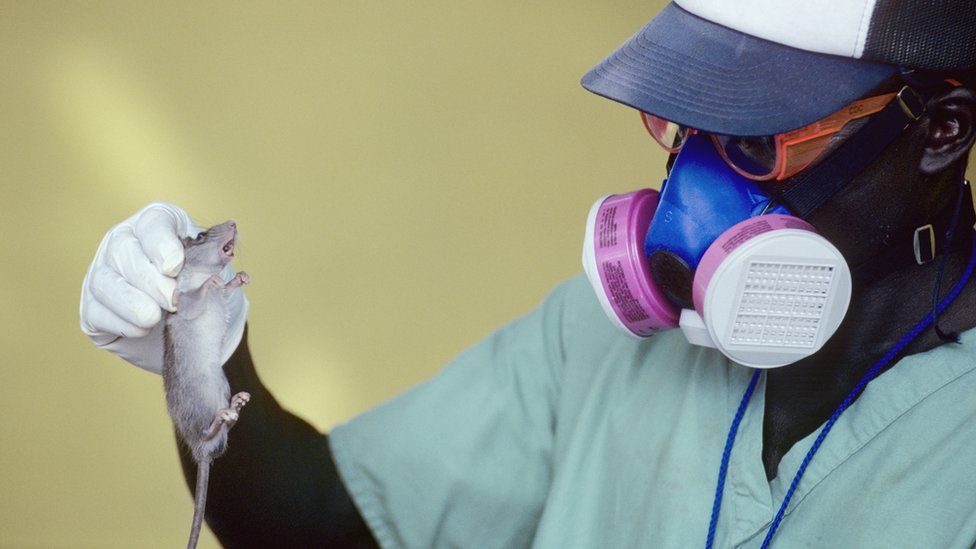Nigeria is facing a growing Lassa fever outbreak as the Nigeria Centre for Disease Control and Prevention (NCDC) reports a concerning number of cases and fatalities. The latest data from the NCDC, in its Lassa Fever Situation Report for Week 41 (October 9–15, 2023), indicates that the viral disease has affected 1,095 individuals, with 188 casualties across 113 local government areas in 28 states.
Lassa Fever Outbreak
Lassa fever is a severe viral hemorrhagic illness, is caused by the Lassa virus, a member of the arenavirus family of viruses. The virus was first discovered in 1969 when an outbreak occurred in Lassa, Nigeria. Since then, Lassa fever has been a recurring health concern, particularly in West Africa.
Transmission and Challenges
The primary mode of transmission of Lassa fever to humans is through contact with food or household items contaminated with the urine or feces of infected Mastomys rats. This disease is endemic in the rodent population in parts of West Africa, making it a constant threat to human health in the region.
In Nigeria, Lassa fever remains a major public health challenge, largely due to several factors that fuel its spread. Poor environmental sanitation, lack of awareness about the disease, and late presentation of cases contribute to the ongoing epidemic in the country. The virus can easily spread in areas where there is inadequate waste management and sanitation practices.
The Current Situation
The NCDC’s Situation Report reveals that the number of suspected Lassa fever cases now stands at 7,724, with a distressing death toll of 188. This has pushed the case-fatality ratio for the current outbreak to 17.2 percent, which is a significant concern for health authorities.
Comparing this data to the same period in the previous year, the NCDC noted a slightly lower case-fatality rate for 2023, with a decrease from 18.9 percent in 2022. While this may be a sign of some improvement, the situation remains grave, and effective measures are urgently needed to curb the spread of the virus.
Widespread Impact
The Lassa fever outbreak has taken hold in 28 states, with at least one confirmed case reported in 113 local government areas. The states most affected by the outbreak are Ondo, Edo, and Bauchi, accounting for 75 percent of all confirmed Lassa fever cases. Ondo reported 35 percent, Edo 29 percent, and Bauchi 11 percent of these cases. This geographical spread underscores the urgency of implementing comprehensive containment measures.
Demographic Patterns
Data also revealed that the age group most affected by Lassa fever is the 21–30 years demographic, with cases spanning from 1 to 93 years of age, and a median age of 32 years. This age distribution mirrors patterns observed in previous outbreaks. While Lassa fever can affect individuals of all ages, young adults are often more vulnerable to the virus.
In terms of gender distribution among confirmed cases, there is a slightly higher incidence in males, with a male-to-female ratio of 1:0.9. The reasons for this gender-based difference in susceptibility to the virus are still under investigation.
Preventive Measures and Response
Efforts to control and mitigate the Lassa fever outbreak are ongoing. Health authorities urge the public to adopt preventive measures, such as maintaining good hygiene, proper food handling, and avoiding contact with rodents. Early detection and prompt medical attention are crucial in managing the disease, and healthcare facilities across the country are being equipped to handle cases effectively.
The NCDC continues to work closely with state governments, healthcare institutions, and international partners to strengthen surveillance, response, and public awareness campaigns in the fight against Lassa fever. It remains a top priority to contain the outbreak and prevent further loss of lives.
International Collaboration
The international community is closely monitoring the situation and is ready to provide support in terms of resources, expertise, and medical supplies. Lassa fever remains a global concern, and Nigeria’s efforts to control the outbreak are seen as vital in preventing the virus from spreading beyond its borders.
The Lassa fever outbreak is a cause for concern, with the virus claiming 188 lives in week 41 and affecting thousands. The government, in collaboration with international partners and local health authorities, has to work to manage and eventually bring an end to the outbreak. Public education, proper hygiene, and early detection are key components of the strategy to control Lassa fever and protect the health of the population. It is essential that these efforts continue to be prioritized to reduce the impact of this persistent health threat.



